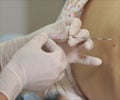There is a serious lack of studies looking into the degeneration and protection measures in the distal end of the injured spinal cord and target organ muscle effector.

The researchers found after injection, rats with spinal cord injury displayed well-recovered motor function, spinal glial scar hyperplasia was not apparent, and anterior tibial muscle fibers slowly, but progressively, atrophied, indicating the distal motor neurons and motor endplate degenerated. These findings, published in the Neural Regeneration Research (Vol. 8, No. 24, 2013), indicate that basic fibroblast growth factor can protect the endplate through attenuating the decreased expression of calcitonin gene related peptide and acetylcholinesterase in anterior horn motor neurons of the injured spinal cord.
Source-Eurekalert










